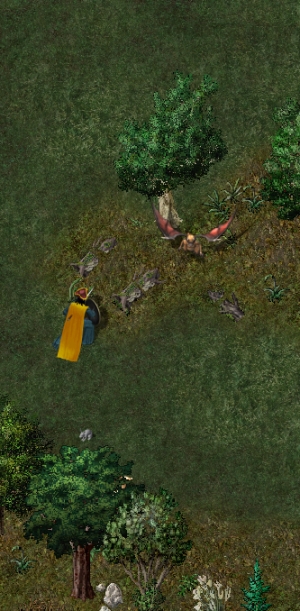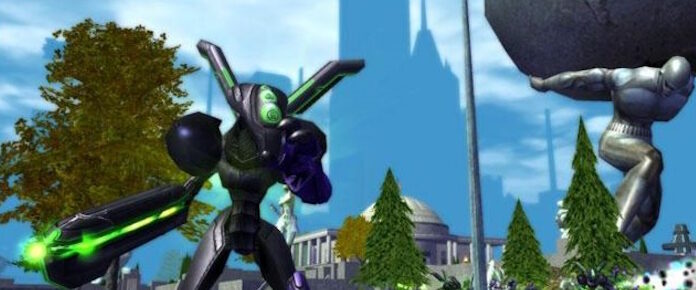
When Radical Heights launched, I was inspired to put together a whole Perfect Ten about why trend-chasing doesn’t work for online games. Obviously, my chief focus was on games that wind up being developed at a rushed pace to cash in on trends and then run face-first into problems with chasing momentary trends, which… you know, you can just read the article; it’s linked right there. But it also prompted a follow-up question by longtime reader Sally Bowls asking why, with all of these issues, why the same rules don’t apply to MMOs.
The answer? Well, there isn’t one answer. There are three answers, all of which are part of the same set of considerations. For one thing, there’s the difference of development time and depth. For another, there’s the time before grinding. And last but not least, well… they do apply, really. But let’s take this piece by piece to talk about why trend-chasing for MMOs doesn’t quite provoke the same immediate reactions as it does for, say, MOBAs.
Development time and depth of field
 How much can you change about a MOBA before it’s not a MOBA? It’s pretty obvious that, say, Heroes of the Storm and League of Legends are both MOBAs. But both games are also pretty similar in their goals and overall design – same basic interface, mechanics, and so forth. I saw some people even arguing that Paragon was the outside limit of what could be called a MOBA, and even that wasn’t so different from the aforementioned entries.
How much can you change about a MOBA before it’s not a MOBA? It’s pretty obvious that, say, Heroes of the Storm and League of Legends are both MOBAs. But both games are also pretty similar in their goals and overall design – same basic interface, mechanics, and so forth. I saw some people even arguing that Paragon was the outside limit of what could be called a MOBA, and even that wasn’t so different from the aforementioned entries.
By contrast, the MMO genre stretches from Ultima Online to EverQuest to World of Warcraft to Defiance to Guild Wars 2. There is a lot of design space to explore there. Even if you start off exploring design space that’s pretty well-known (i.e., starting from “World of Warcraft but with story development and housing”) you have loads of different permutations available. There’s a whole lot of different systems that can be the same or different without changing the nature of the game as an MMO.
This is a good thing because developing an MMO takes a while. Significantly longer, really, than developing a lot of the more trend-chasing titles do. You have to develop a whole lot of content, game mechanics, interlocking systems, solutions for online persistence, and so forth. You could, if you struggled at it, knock together a battle royale game in a few months; you can’t do that with an MMO.
Consider that Star Trek Online took a year of development, had most of the systems already developed for a separate game, was being handled by a veteran team, and was still a minor miracle in the fact that it managed to launch in a playable state within that timeframe. It’s hard to chase a trend when it’s going to take you multiple years to show up to the party.
That doesn’t mean trend-chasing doesn’t happen, of course; see the third part of this particular column. It just means that starting to develop a game just to chase a trend is going to result in your being left out in the cold while the trend gets flashy and then dies out as the world moves on. And with more variation possible, you aren’t constrained by as narrow a mold as some of the most trend-heavy genres.

The time to grind
Grinding happens in basically every game, eventually. You stop doing new things and start doing the same thing over and over. It’s not really a bad thing, per se; it’s just a thing. Every game has only so much stuff to show off, after all. But the time to grind matters a lot.
When you start playing the latest battle royale game, you are still basically playing every other battle royale game. There’s a brief period of time in which you get to learn about this particular game’s new mechanical wrinkles and control irregularities, and then you’re immediately into the cycle of “play that match again, over and over, to skill up and gradually unlock things.”
This is a problem when we’re talking about making these things sticky. If a new MOBA immediately drops you into “grind up your competitive rank and practice” after one match, then it has a mark against it compared to the games you’ve already played. You’re already into the grind, and in League of Legends you’ve already done a lot of this work and already unlocked stuff.
By contrast, MMOs tend to have a long time to grind. You could argue that there are only minor differences between raiding in Star Wars: The Old Republic and World of Warcraft, but in order to get there, you have to reach the level cap, explore story content, and run across all sorts of other systems along the path. By the time you’re into “repeatedly run raids/dungeons/PvP matches,” you’ve presumably reached the point where you are already invested.
This isn’t to say that this is inherently a problem; if you’re having fun playing Overwatch, it doesn’t matter much if every given match is basically the same with a different selection of characters and maps. But if another game comes out with the exact same formula… you already have stuff unlocked in Overwatch, and you’re used to its quirks. It’s not exactly enticing to swap over to the grind in a completely new game unless that new game has something really compelling to it.
Conversely, MMOs are more likely to suffer from the inverse problem, where the front end of the game doesn’t resemble the game you are later stuck with when you reach the endgame. Ironically, this is where a lot of trend-chasing often winds up, like the pattern of slapping raid-or-die endgames after you’ve gotten used to doing other things for fun. (I’ve said before that a big part of what makes Final Fantasy XIV work is that when you hit the level cap, you are still doing what you did in the process of reaching that cap; the first chunk of levels isn’t a separate experience but a tour.) So you have space to fall for those new mechanics.
Heck, some players enjoy playing just for the new mechanics. You might not want the grind, but you want the fun combat up to the grinding back-and-forth. This means there’s a drive to make the early levels different.

The rules are still rules
Hey, remember when SWTOR launched and people on Massively-that-was were asking when we’d spin off SWTOR Insider? That was pretty funny. It gets funnier every year, even. But you don’t need to pick on that particular game; you can make the same joke about Warhammer Online Insider, after all. Or RIFT Insider.
The point here isn’t that these games are bad; it’s that these titles all worked really hard to directly emulate WoW in various arenas, and that arguably hurt them a lot in terms of longevity. It’d be hard to argue that SWTOR or RIFT are realistically big enough to justify their own spin-off sites at this point. Following the trends might not be as egregious in these cases, but the trends were still followed… and the results were still the same.
If you want to see some really follow-the-leader design, look to our various temports over the years. Those games are often pumped out in short order using similar basic engines… and then they fade away almost as quickly as they get brought out. We might not get the same sort of quick copy-and-drop games as we do in the MOBA genre, but no one has ever said that a game does better for slavishly copying WoW.
The big success stories of the past several years, in fact, have been games that specifically aimed to break out of trends in various ways. Games like Guild Wars 2, The Elder Scrolls Online, and the aforementioned FFXIV have all taken lessons from previously successful games, but none of them has tried to be “game X but with Y.” You can see how the developers learned the lessons about why game X was successful without trying to copy the surface elements.
And at the end of the day, that’s what usually kills copycats so badly: the fact that you can’t have the runaway success of Fortnite without understanding why Fortnite succeeded, what need it was filling, and offering something that fills that niche better or serves an adjacent one. The next successful battle royale game (if there is one) will be oriented in that direction, looking at the parts that work and building from that. The unsuccessful ones will be, well, PlayerUnknown’s Battlegrounds but with a vague ’80s theme.
You can argue that SWTOR was going for WoW but with Jedi, and it still has enough players to keep running. But you can’t argue that it’s more successful than ESO, and that alone should give you an idea about how the copycat problem still hits MMOs just the same.
 Everyone has opinions, and The Soapbox is how we indulge ours. Join the Massively OP writers as we take turns atop our very own soapbox to deliver unfettered editorials a bit outside our normal purviews (and not necessarily shared across the staff). Think we’re spot on — or out of our minds? Let us know in the comments!
Everyone has opinions, and The Soapbox is how we indulge ours. Join the Massively OP writers as we take turns atop our very own soapbox to deliver unfettered editorials a bit outside our normal purviews (and not necessarily shared across the staff). Think we’re spot on — or out of our minds? Let us know in the comments!














